Why Does The End Of The World Look So Profitable?
Authored by Michael Kern via OilPrice.com,
-
Sovereignty is shifting from public institutions to private tech entities like Palantir and SpaceX, which secure massive government contracts and offer "governance as a service."
-
The AI boom's massive resource demands, particularly for energy and water, are being subsidized by the public, driving up costs while "efficiency" in the workplace leads to widespread job deletion and the flattening of the middle class.
-
To address this shift, a new social contract is required, including adopting a Sovereign Equity Model for government-funded ventures, implementing an automation tax to replace eroded payroll taxes, and moving toward Universal Basic Services.
The stock market is hitting record highs. GDP growth is in the green. Tech valuations are defying gravity... fueled by a promise that artificial intelligence is going to generate trillions of dollars in wealth.
And yet... everything feels kinda…terrible?
Jobs are disappearing, not in a crash, but in a slow fade. Prices for essentials remain stubbornly high. The divide between the digital economy and physical reality has never been wider.
We are told this is just a transition period. We are told that "efficiency" is messy... but necessary.
But the unease you feel isn’t irrational. The green arrows on the stock charts aren't measuring the health of the everyday economy anymore. They are measuring the success of a takeover.
We are watching a fundamental shift in how the state operates. Sovereignty is shifting from public institutions to a network of private entities. And in many ways, we are holding the door open for them.
When Silicon Valley Bought the StateFor years, we talked about the "revolving door" between business and government.
The idea was that regulators would leave office and take cushy jobs at the companies they used to police. It was a conflict of interest... but one we understood.
That metaphor doesn't really fit anymore. This is more like a merger.
A specific network of billionaires and venture capitalists has moved beyond lobbying. They are now building the state infrastructure themselves.
They don't want to influence the rules. They want to be the ones writing the code that executes the rules.
Look at the players involved...
-
Peter Thiel: The billionaire founder of Palantir, who has explicitly stated that he no longer believes "freedom and democracy are compatible."
-
Elon Musk: Who uses his platforms to amplify "techno-populism" while securing massive government contracts.
-
Marc Andreessen: The venture capitalist whose "techno-optimist manifesto" calls for unlimited acceleration of technology, regardless of the social cost.
These aren't just businessmen. They are state-builders.
And they’ve spent the last decade funding a pipeline of personnel to place into key government positions.
Thiel’s former chief of staff, Michael Kratsios, directed the White House Office of Science and Technology Policy.
An executive from Anduril, a defense contractor backed by Thiel’s Founders Fund, was nominated as Army under-secretary while still holding up to $1 million in company stock.
This pipeline has paid off. In late 2024 and 2025, we saw a massive consolidation of federal power into private hands.
-
SpaceX: The company secured a $1.8 billion classified contract with the National Reconnaissance Office (NRO) to build a vast spy satellite network.
-
1789 Capital: A venture firm joined by Donald Trump Jr. backed a company called Vulcan Elements... which immediately landed a $620 million Pentagon contract.
-
Palantir: By late 2024, 55% of their revenue—roughly $1.7 billion—came directly from government sales.
They have realized that the most profitable business model isn't just selling products to consumers. It is offering "governance as a service."
We look at this efficiency and applaud it. But it raises a difficult question: When a private company runs the software that powers the state, who is actually in charge?
Abundance for Them, Scarcity for YouThis new system requires fuel. A lot of it.
The leaders of this shift love to talk about "abundance." Listen to Sam Altman or other AI evangelists, and they will tell you we are on the verge of a "fusion utopia." They promise that AI will eventually solve climate change and give us limitless, clean energy.
That is the sales pitch. And maybe, one day, it will be true. But the reality today is a story of immediate resource pressure.
To power the massive data centers required for their AI models, these companies are tapping into the American energy grid at an unprecedented scale.
According to the International Energy Agency (IEA), power consumption from data centers is projected to more than double... rising from 415 terawatt-hours in 2024 to 945 TWh by 2030.
To put that in perspective... that is roughly the equivalent of adding the entire electricity consumption of Japan to the global grid in just six years.
Where will this power come from?
Not from the magic fusion reactors of the future. It is coming from the grid you rely on today.
In the PJM electricity market, which covers 13 states from Illinois to New Jersey, the demand from data centers has already driven capacity prices up.
To meet this need, the government is pivoting.
The Department of Energy is increasingly financing coal and natural gas expansion to keep the servers humming.
It creates a difficult dynamic:
-
Tech giants lock down "clean" baseload power... like Microsoft’s deal to restart the Three Mile Island nuclear plant solely for their own use.
-
The public grid is pushed to rely more on the volatile "spot market," often powered by gas.
-
Communities deal with the environmental cost... including the 6 billion gallons of water Google’s data centers consumed in 2024.
It isn't necessarily malicious…It’s just math. But the math ends with the public paying higher bills to subsidize yet another part of the AI boom.
How "Efficiency" Is Deleting the Middle ClassThis shift isn't just happening on your electric bill. It is happening in the workplace.
The stock market is rallying on the promise of "efficiency." And let's be honest, technology does make things more efficient. But for the workforce, "efficiency" often looks like a closing door.
We often look at headline-grabbing layoff numbers. And they are significant. In the first few months of 2025 alone, over 126,000 tech workers lost their jobs, according to Crunchbase.
But the bigger story is what happens after the layoff.
It is a phenomenon called "silent firing."
Companies aren't just letting people go. They are simply... not hiring replacements. When a worker leaves, the role is dissolved, or the tasks are handed over to software.
According to a report by Zety and Allwork, 73% of workers reported experiencing "quiet firing" tactics in 2025... where support is withdrawn and roles are made redundant without a formal announcement.
The entry-level jobs are being automated first. If you are a junior analyst, a copywriter, or a coder fresh out of college... the job you would have taken five years ago is harder to find.
This flattens the middle class. It creates a gap where new careers should be. And the industry leaders know this is happening.
The Trap of Outsourcing Global SovereigntyThis isn't just an American dynamic. This new model of "privatized sovereignty" is being exported globally.
Europe, for example, talks a lot about "Digital Sovereignty."
They want to be independent. But building your own tech stack is expensive and slow.
A report by the Centre for European Policy Analysis (CEPA) estimates that achieving true digital independence would cost Europe €3.6 trillion.
Most nations aren't willing…or able…to pay that bill. So, they sign contracts.
74% of publicly listed European companies now depend entirely on U.S. tech stacks.
Look at the United Kingdom.
The NHS signed a £330 million deal with Palantir to build its data platform. It’s efficient. It works. But it means a U.S. company now manages the health data of the British public.
Look at Ukraine. Their defense relies heavily on Starlink. It has saved countless lives. But it also means their military communications rely on the goodwill of a single American company.
It is a trade-off. These nations get the best technology in the world. But they become 'client states' in the process. You cannot have a truly independent foreign policy when your defense infrastructure is leased from a company in California.
And if a G7 nation can be reduced to a client state, the individual American worker doesn't stand a chance.
The architects know this. That is why they have prepared a specific 'safety net' for the people they intend to make obsolete.
UBI Is a Trojan HorseWe need to talk about the "safety net" the architects are promising us.
Every tech billionaire has the same talking point: AI is going to take all the jobs, so we will need Universal Basic Income (UBI).
It sounds generous. It sounds inevitable. But if you look at their actions, it looks less like a safety net and more like a trap. While they preach UBI in the future, they are actively dismantling the machinery required to fund it in the present.
Elon Musk frequently claims that UBI will be "necessary" in an AI future. Yet, he lead the Department of Government Efficiency (DOGE), an initiative explicitly designed to slash federal spending by trillions.
You cannot have it both ways.
You cannot gut the federal budget, fire the administrators, dismantle the tax collection agency (IRS), and then claim you are going to distribute a monthly check to 330 million Americans.
And it’s not like he’s going to give away his own money, either.
He recently stated: "The biggest challenge I find with my foundation is trying to give money away in a way that is truly beneficial to people."
He is literally telling us that he finds philanthropy "too difficult." If he can't figure out how to give away his own money, why should we trust him to build a system to give away the nation's money?
Sam Altman, the CEO of OpenAI, advocates for a "Moore's Law for Everything," where we tax capital to fund a citizen's dividend.
But his actual product, Worldcoin, reveals the true business model.
Worldcoin doesn't give you a dividend as a right of citizenship; it gives you a crypto token in exchange for scanning your iris. It creates a proprietary database of human biometrics owned by a private company.
This is a customer acquisition strategy. He wants to build a user base, not a social safety net.
And for figures like Peter Thiel, UBI isn't even meant to help the poor. They aim to delete the government.
UBI is the severance package for the "nanny state." The deal is simple: cut every citizen a check, and in exchange, eliminate Social Security, Medicare, and public infrastructure.
It sounds like freedom, but it is a bad trade.
Even if the check is large, it cannot replace the leverage of the state.
The government negotiates wholesale prices for healthcare and runs transit at a loss for the public good.
If you replace those systems with cash, you force individuals to buy "retail" in a market that knows exactly how much money they just received.
You are trading a durable right to services for a volatile subscription to them. And as any Netflix user knows, the price of the subscription always goes up.
Auditing the Myth of the "Self-Made" EmpireBefore we talk about solutions, we have to look at the receipts. We need to audit the myth of the "self-made" techno-oligarch.
The narrative they sell is one of libertarian genius…that they built these empires in a garage, fighting against the heavy hand of the state.
The reality is that the state was their angel investor.
We…were their angel investor.
-
Tesla survived its most critical moments thanks to a $465 million Department of Energy loan in 2010.
-
SpaceX exists because NASA awarded them huge contracts when the private market wouldn't touch them.
-
Palantir was literally incubated by the CIA’s venture arm, In-Q-Tel.
-
OpenAI is currently lobbying for a $500 billion infrastructure investment, asking for taxpayer-funded power grids and tax credits to build data centers.
On top of the direct cash, the founders and CEOs have benefited from a tax code designed to let them hoard it.
The 2017 tax cuts slashed the corporate rate from 35% to 21%, and loopholes allow them to borrow against their stock holdings to live tax-free, while the average worker pays income tax on every paycheck.
Then there is the hidden subsidy: resource extraction.
When a data center drains a local aquifer to cool its servers, forcing the local town to upgrade its water treatment plant... the town pays for that upgrade. The company gets the cooling; the public pays the bill.
But it isn't just water. It is the air itself.
Despite the 'net-zero' press releases, the dirty secret of the AI boom is diesel.
To guarantee 99.999% reliability, these facilities rely on banks of massive generators.
In some counties, data centers are permitted to burn enough fuel to rival a major airport, pumping exhaust into local lungs to ensure a chatbot in California never lags.
And it is the noise.
These things are massive, concrete fortresses emitting a constant, low-frequency roar—a mechanical drone that penetrates walls and disrupts sleep for miles. It is the sound of local quality of life being liquidated for uptime.
Then there is the infrastructure bill.
The enormous power draw requires billions in new transmission lines. But the tech companies often aren't the ones paying for those upgrades…you are.
We have socialized the risks, the infrastructure costs, and the pollution, but privatized the profits, the intellectual property, and the control.
Demanding a Return on Our InvestmentSo... where do we go from here?
The old social contract was simple: Corporations make money, and in return, they provide jobs.
That contract is void.
They are building systems explicitly designed to remove the need for jobs.
The "Return on Investment" for the public is no longer employment. And it certainly isn't UBI, which remains a distant fantasy while the tax base to pay for it is eroded.
If the public is going to put up the capital, and deal with the consequences of ballooning energy and resource use, the public should see a return.
We need a new model for ROI.
The Sovereign Equity ModelIn the venture capital world, if an investor puts up the money to de-risk a technology, they get equity. They get a seat on the board. They get a share of the upside.
Yet, when the U.S. taxpayer does it, we call it a "subsidy."
The CHIPS Act alone funneled $52 billion into semiconductor manufacturing…
While the taxpayers who funded this got nothing but the bill.
This is bad business.
We need to adopt a Sovereign Equity Model.
If a company wants a government loan, a tax credit, or a guaranteed energy contract, the government should take equity warrants in return. This isn't radical socialism… It’s basic capitalism.
It is exactly what Warren Buffett did when he bailed out the banks in 2008. He didn't give them free money…he bought warrants that eventually made Berkshire Hathaway billions.
We already have a successful blueprint for this in the Alaska Permanent Fund.
Since 1976, the state of Alaska has treated its oil reserves not as private bounty, but as a shared asset. When the oil flows, a portion of the revenue is deposited into a sovereign wealth fund, which then pays out an annual dividend to every resident.
We should treat our digital and energy infrastructure the same way.
The profits from these government-backed equity stakes shouldn't disappear into the black hole of the general budget; they should flow into a ring-fenced National Wealth Fund that pays dividends directly to the citizenry.
If the American people are taking the risk, we should own the upside.
Tax the Robots to Save the Tax BaseThe U.S. tax code is currently rigged to favor machines over people.
If you hire a human, you pay payroll taxes, social security, and healthcare. If you buy a GPU cluster to do the same job, you get a tax write-off for "depreciation." We are effectively subsidizing our own replacement.
We need to rebalance the ledger with an automation adjustment.
This is not about punishing innovation… It’s about fiscal survival. Payroll taxes consistently account for roughly 30-35% of all federal revenue. If AI fulfills the promise of displacing millions of workers... that revenue stream collapses. The deficit explodes. The economy breaks.
Bill Gates, hardly a socialist, made this point explicitly: "Right now, the human worker who does $50,000 worth of work in a factory... that income is taxed... If a robot comes in to do the same thing, you’d think that we’d tax the robot at a similar level."
If a company replaces a human workflow with an AI agent, the economic output remains, but the tax contribution vanishes. We need to attach a levy to that output.
Data DividendsData is the new oil. We have heard the cliché a thousand times. But we aren't treating it like oil.
The AI models generating trillions in value were trained on the collective output of humanity. They scraped our journalism, our art, our open-source code, and our personal data. They harvested the "digital commons" for free... processed it... and are now selling it back to us at $20 a month.
In any other industry, this would be theft. If you drill for oil on someone else's land, you pay royalties. If you use someone else's timber, you pay for the lumber.
The generative AI market is projected to reach $1.3 trillion by 2032….
The raw material that fuels that market cannot be priced at zero. If our data is the raw material for their product, we are the suppliers. And suppliers get paid.
Universal Basic ServicesIf we give everyone a $5,000 UBI check, but the price of housing, energy, and internet doubles... we haven't solved anything. We have just subsidized the landlords and the utility companies.
The smartest Return on Investment is to lower the "overhead" of being alive in America.
We should move toward Universal Basic Services (UBS). Use the proceeds from the equity stakes, the automation taxes, and the data dividends to fund the inputs of the modern economy:
-
Public Compute: Treat processing power like a public utility. Build state-owned clusters available to researchers and startups at cost, breaking the pricing power of the tech giants.
-
Green Public Transit: Make car ownership optional, removing a massive monthly debt anchor from the working class.
-
Digital Infrastructure: High-speed internet should be a right, not a subscription service dominated by regional monopolies.
We are hitting the physical limits of our energy grid. We are seeing the limits of the old labor model. We might have to accept that "infinite growth" isn't compatible with a finite planet.
But "no growth" doesn't have to mean poverty.
The vibes are off because deep down... we know the deal has changed. We are moving from a world of public institutions to a world of private platforms.
The "New Operating System" is being installed. And it is faster. It is more efficient. It is undeniably impressive.
But we have to decide if we want to be the owners of this new future... or just the users.
Tyler Durden Tue, 12/09/2025 - 05:00

 via Associated Press
via Associated Press

 Associated Press
Associated Press

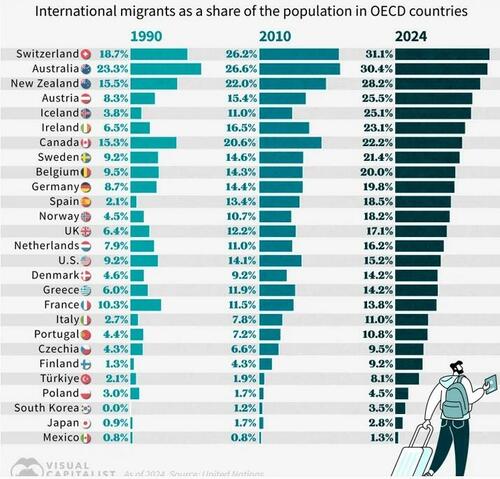







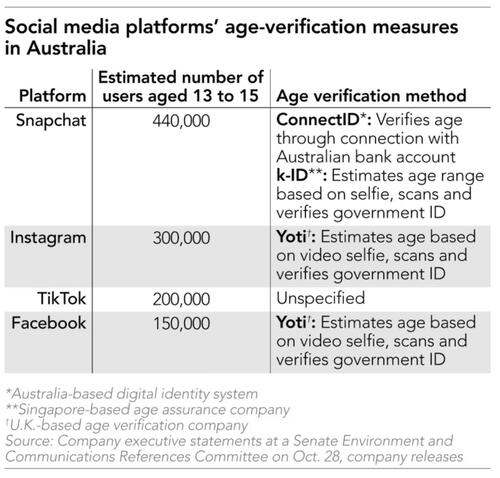





 Close up of the Lockheed Martin Airborne Laser Turret in a clean room. Photo: Lockheed Martin.
Close up of the Lockheed Martin Airborne Laser Turret in a clean room. Photo: Lockheed Martin. The F/A-XX placeholder design as shown by the U.S. Navy in its vision for 2030-2035, together with a better image of the original fictional design. (Image credit: U.S. Navy and Tapatalk)
The F/A-XX placeholder design as shown by the U.S. Navy in its vision for 2030-2035, together with a better image of the original fictional design. (Image credit: U.S. Navy and Tapatalk) via Tom Barrack/X
via Tom Barrack/X The glasses are always the tell
The glasses are always the tell Tieheen Fletcher, Convicted of murder and weapons offenses.
Tieheen Fletcher, Convicted of murder and weapons offenses.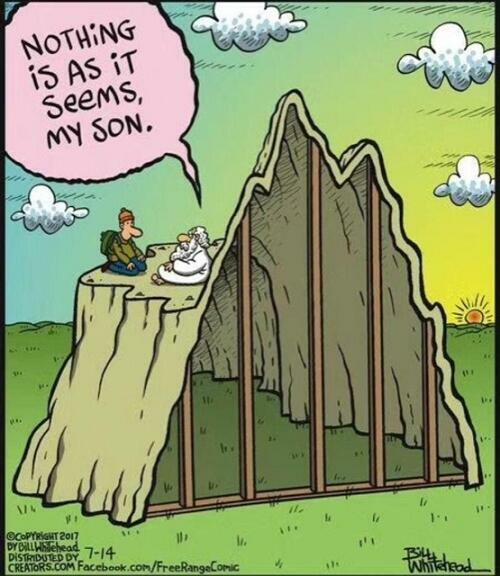
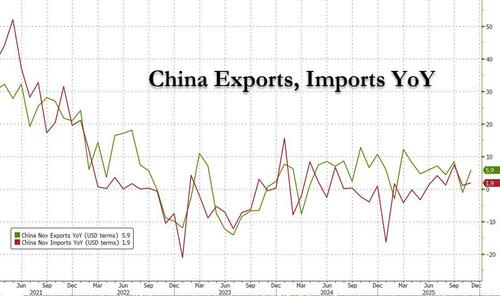
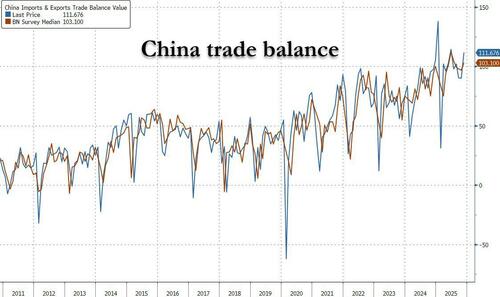

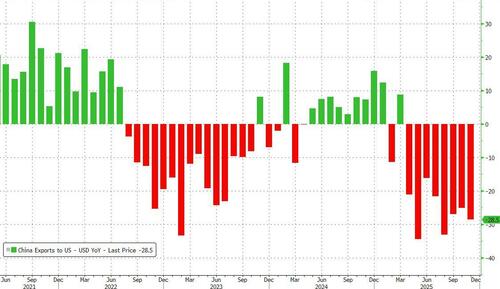

 French President Emmanuel Macron in China
French President Emmanuel Macron in China

Recent comments